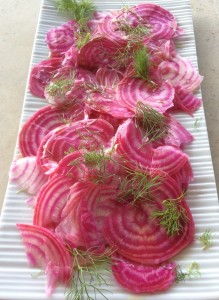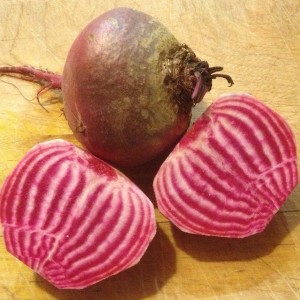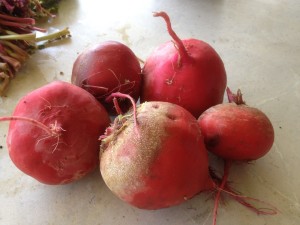Candystripe beetroot is a bit of fun for the vegetable patch. I’ve never seen it in the shops, and it would be difficult to sell as it looks like a plain red beet until peeled and cut, so it’s one of those vegetables that reward the home gardener with something unusual.

Using candystripe beetroot
I had seen candystripe beetroot in the seed catalogues as the Chioggia cultivar, and been intrigued by it as I had never seen it in the shops. However I read that unfortunately the stripes disappear when it is cooked, which seems to defeat the purpose of growing it. It took the chance discovery of one of Matthew Kenney’s cookbooks on raw food to get the inspiration to use it raw as a salad. Then I bought the seeds and started the process.

Now I’ve finally got some through to a good size, and they have gotten sweeter with the recent warmer sunny weather, so tonight we will have beetroot carpaccio. It can be a much more complex dish, but here I’ve just sliced it paper thin and left it to marinade in olive oil and lime juice for a few hours, with a fennel garnish. It certainly catches the eye and looks appetising.
Growing candystripe beetroot

Getting to this stage has been a learning process. Beetroot can be a disappointing crop until you get the soil right. It needs neutral soil (around pH 7, so lots of lime is needed for our soil), plenty of fertiliser and plenty of water. My best crops have grown on soil conditioned with the old flooring hay from the chicken coop, and beds that have had a few previous crops with fertiliser and lime to build them up.
Winter and Spring are the best seasons in our subtropical climate for beetroot. It can be hard to germinate and keep growing strongly in hot weather. With all beetroots, you want to get good sized roots as quickly as possible, to keep them sweet and tender.
Beet seeds come in little clumps, so they tend to germinate in pairs if you sow from the packet. You can either soak them overnight and pull them apart before sowing, or pull out the smallest of each pair once they are germinated.

